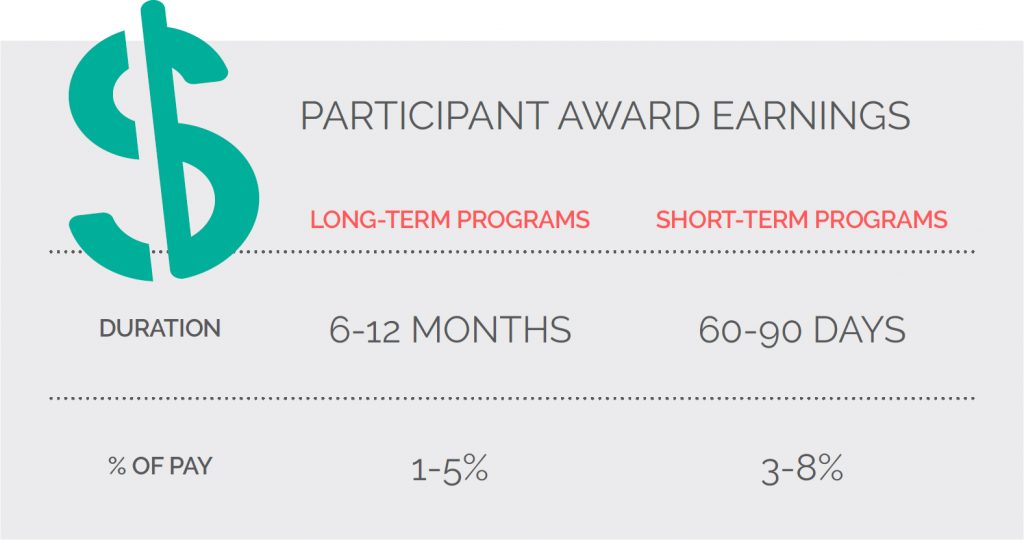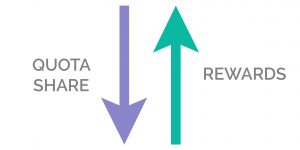Incentive programs have become a key component of motivating sales teams inside high-performing companies. Studies have shown that 86% of organizations utilize a form of incentive rewards, recognition programs, or channel incentives to invigorate sales. Companies large and small are finding ways to use motivation tactics to bring out the best in their teams:
- HP
- Cisco
- Unilever
- Airbnb
- Siemens
- And many more!
We know that determining a specific reward amount can be a daunting task, so we are answering your questions regarding channel rewards. So, let’s dive into the rewards budget and later touch on effective budget decisions.
Budget for the Reward
How much should a company reward a channel representative?
The channel incentives industry average is 1% of sales. Therefore, if you forecast $5,000,000 in sales, then you can deduce that $50,000 is a reasonable amount for your reward budget. Given our own experience, we agree that 1% is a good starting point. But can there be other ways to calculate this budget? Here at Brightspot, we’ve taken our collective knowledge and found several common approaches to this budget. We’ll let you in on some of these motivational secrets and go through different ways you can piece this together.
Look at Sales
What percent of sales should be used to reward a channel representative?
Maybe you want to budget based on your total sales or profit. Our recommended percentages are based on various sales and profit dimensions with examples underneath. Feel free to play around with your own numbers and see what your budget turns out to be.
0.5 – 2% of Sales
-
- 2% of $150,000 of Sales = $3,000 for your Rewards Budget
- Sales = Total revenue or sales generated
1 – 3% of Gross Profit
-
- 3% of $75,000 of Gross Profit = $2,250 for your Rewards Budget
- Gross Profit = Total amount of profit after subtracting expenses or cost of goods sold
5 – 10% of Incremental Gross Profit
-
- 10% of $25,000 of Incremental Gross Profit = $2,500 for your Rewards Budget
- Incremental Gross Profit = Incremental profit exceeding prior fiscal year’s profit across the same timeframe
We do want to give fair warning to those who choose to base their program fully on sales. We have found that it can be rather dangerous. In complex businesses today with wide-ranging product portfolios, varying product mixes, and most importantly, sliding gross margin percentages, you’ll very likely find yourself overspending. Instead, look at gross margin percentages and support incentive payouts that way.
Look at Salary
What percent of a person’s salary should be used to reward a channel representative?
The incentive industry average is 2-3% of annual pay. For short-term programs lasting 30 to 90 days, we recommend 3-8% of pay. You’ll notice that the percentage increased when we decreased the duration. This was done to maintain a worthwhile prize. For example, 2% of $100,000 is a very different from 2% of $10,000. That’s why we recommend increasing the percentage for smaller durations. We’ve even created this handy chart below that takes duration and percentage of pay into account.
Using this chart, let’s calculate the specific incentive costs for a sales team that runs a 12-month program. If each sales team member’s salary is $80,000, an attention-grabbing incentive would be 4% or a $3,200 award. Using a different example, we can crunch the numbers again for a 60-day program and find that a good incentive would be 6% of 2-months pay. This comes out to a reward amount of $800.
Looking at all these breakdowns should give you a good idea of how your reward’s budget can be calculated. They provide a good baseline for you to follow; however, you may find reward percentages may fluctuate higher or lower at times.
We’ve created a pricing calculator that takes into account the number of participants, length of the program, annual pay, and more to help you nail down your channel reward costs. Click the link below and play with different scenarios to see what works best for you.
Make an Effective Budget Decision
Once you’ve nailed down your budget amount, you’ll want to ensure you are getting the most out of your program. This could mean re-evaluating your rewards, channel partners, sales team, and more. The goal needs to be fixed on motivating the right participants to generate the profits required to pay for the program itself. There’s a lot to unpack, so we’ve boiled it down into several digestible concepts.
Perspective & Why It Matters
Let’s talk about the two most crucial budgeting perspectives of an incentive program:
- Company Perspective
- Participant Perspective
A well-rounded program includes a well-rounded understanding of both these perspectives.
Regarding the company perspective, you will be analyzing internal factors. You should ask these questions: Why is this good for the company? Will it generate an ROI? Revisit your goals and think through why you are choosing an incentive program in the first place. Determine if the program will be based on incremental sales, competitive response, growing market share, new product lines sales, or sales enablement. Once you do that, you’ll be able to identify the importance and profitability of each activity or qualified product sales. And that means you’ll get a little insight into what you can spend on your rewards.
Participant perspective may be even more important than company perspective. Nothing could be worse than providing a reward that none of your participants want. You don’t want to go down this road, and that’s why it’s essential to analyze the demographics (age, pay, gender, etc.) and psychographics (feelings about the company, product, etc.) of your participants. Examine this group to determine headcounts and those most likely to participate. Then, when you feel you’ve got a good grasp on your audience, review your reward selection ideas and your participants’ perceived value of the rewards. If you want to review our target audience checklist, check out our eBook on the 12.5 Steps to a Perfect Incentive Program.
Minimize your own reward preference and maximize the audience’s reward preference. And ask yourself, “will the reward truly motivate them?”
The Take Rate
When you’re feeling good about your rewards and their motivation factor, start considering your participant’s “take rate” or rate of redeeming rewards. A channel partner may either submit claim forms for eligible sales or have a system automatically report each sale via an electronic file upload. If your participants are manually reporting, the take rate might be 20-40% because each entry is manually entered.
Interestingly, research shows that participants who self-report their sales will be more engaged individually, but the overall take rate for all eligible participants will be lower. Therefore, if an internal reporting tool such as Salesforce is used that automatically reports 100% of sales, you’ll very likely see a lower take rate of “claimed” sales. Lastly, keep in mind with automatic reports that you’ll want to limit the number of redeemable reward sales to something like 25-50%. You don’t want to break the bank by paying out too much.
Quota Share and Mind Share
Often overlooked is the concept of “quota share.” Non-exclusive dealers, partners, or agents might sell ten to twenty different brands. Where does your brand fit on their list? Is it on the top or bottom? Understanding your brand’s share of a typical rep’s quota is incredibly essential. If you have a small quota share, you likely have a small mind share. Essentially, your brand won’t come to the top of their mind when making a sale. Your promotional offers will need to be richer and your communications greater to capture a disengaged rep’s attention space – otherwise known as mind share.
Talking Funds and More Funds
A properly designed channel incentives program will be self-funding. This can happen because the incremental gross margin on the increased sales volume will fund the reward costs.
If you are a reseller, MDF or Marketing Development Funds might be an option to pay for rewards. In recent years it has been a popular route to fund incentive programs. These are funds where resellers get co-op marketing dollars from manufacturers to promote their products. So, it may be worth it to reach out to those manufacturers.
Next, let’s touch on contra revenue. Although it’s a term more comfortably used in accounting and finance, the practice can help fund an incentive program. The term “contra revenue” basically means “opposite revenue,” and it’s a charge against your gross revenue. It appears at the top of an income statement, and essentially what you need to know is that many companies allow contra revenue liberally for rewards. Therefore, an channel incentives program sponsor may only need to find budget dollars for the incentive support costs.
Did you learn something new? It’s very easy to overlook that there’s more to budgeting than just money. Let’s hope after reading this, that’s not your only focus. We want to equip you to make the best decision possible, and we hope that this information can broaden your understanding.
brands.
Don’t Forget the Other 30%
There’s a 30% piece of a channel incentives program that is often overlooked. If you peek below, you’ll notice that we recommend 70-85% of your budget be allocated to rewards out of the entire incentive budget. In order to have a successful program, the rewards budget should only be a portion of your total channel incentives program budget. We want to remind you to factor in administration, communications, and technology budgets (the other 30%) on top of your rewards budget. Feel free to check out our incentive budget pie to learn more about these three budget pieces or read our blog on the Cost to Start a Channel Partner Incentive Program.
We love to see successful incentive programs get off the ground with a proper and effective budget. As a third-party channel incentives company, we can meet your needs with expert consulting and help you create the perfect motivational channel incentive package. Our award-neutral stance also means you’ll get your programs evaluated on all five reward categories instead of a select few. Check out what we can do for you, or contact us today!








